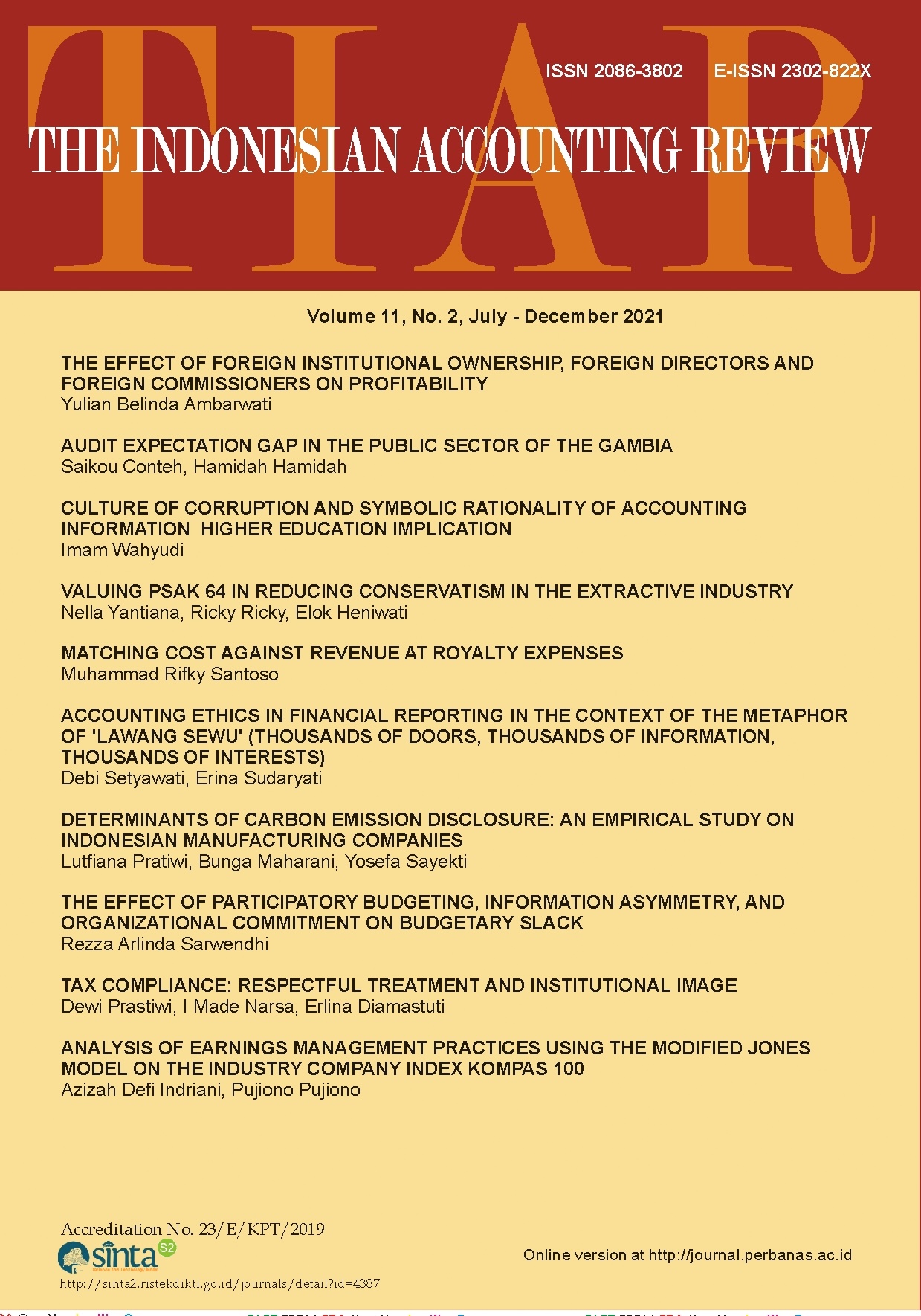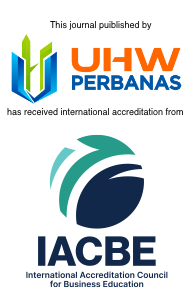Accounting Ethics in Financial Reporting in The Context of The Metaphor of "Lawang Sewu" (thousands of doors, thousands of information, thousands of interests)
DOI:
https://doi.org/10.14414/tiar.v11i2.1999Keywords:
Readability of Financial Statements, Financial Reporting, Lawang Sewu, MeasurementAbstract
This study aims to improve the readability and understanding of financial statements through a conceptual framework of financial reporting and its derivatives. This study employed an analytical method as a conceptual framework, where financial accounting standards, financial reporting, and the results are described by the term "Lawang Sewu" as a reflection. The results show that the term 'Lawang Sewu' has similarities with accounting ethics in financial reporting, where "lawang" (Javanese) means door refers to "door of information" and "sewu" (Javanese) means a thousand or many refers to having many information and interest in accounting reporting performance. Accounting ethics in financial reporting also describes the strength of the 'Lawang Sewu' building which is not damaged despite its old age. Financial statements reflect the company's past, present and future values. Based on the conceptual framework of accounting, financial statements must meet two qualitative criteria: primary qualitative (relevant and in accordance with actual conditions) and secondary qualitative (comparable, testable, timely and understandable). Thus, financial reports are expected to be transparent so that users can use them appropriately.
References
Arif, M. L. S., Aulia, R., & Herawati, N. (2014). Persepsi Mahasiswa Akuntansi tentang Praktik Creative Accounting. Jurnal Akuntansi Multiparadigma, 5(1). https://doi.org/10.18202/jamal.2014.04.5009
Bartens, K. (2000). Pengantar Etika Bisnis. Kanisius, (Yogyakarta).
Barthes R. (2011). Mitologi. Kreasi Wacana, Bantul.
Bateman, J. A. (2017). Triangulating transmediality: A multimodal semiotic framework relating media, modes and genres. Discourse, Context and Media, 20(July), 160–174. https://doi.org/10.1016/j.dcm.2017.06.009
Chakrabarty, B., Seetharaman, A., Swanson, Z., & Wang, X. (Frank). (2018). Management Risk Incentives and the Readability of Corporate Disclosures. Financial Management, 47(3), 583–616. https://doi.org/10.1111/fima.12202
Choi, H., & Suh, S. H. (2019). The effect of financial reporting quality on CEO compensation structure: Evidence from accounting comparability. Journal of Accounting and Public Policy, 38(5), 106681. https://doi.org/10.1016/j.jaccpubpol.2019.106681
Collings, S. (2016). Going Concern. UK GAAP Financial Statement Disclosures Manual, 365–384. https://doi.org/10.1002/9781119283393.ch22
Edvandini, L., Subroto, B., & Saraswati, E. (2014). Telaah Kualitas Informasi Laporan Keuangan dan Asimetri Informasi Sebelum dan Setelah Adopsi IFRS. Jurnal Akuntansi Multiparadigma, 5(1). https://doi.org/10.18202/jamal.2014.04.5008
Fanani, Z. (2009). Kualitas Pelaporan Keuangan: Berbagai Faktor Penentu Dan Konsekuensi Ekonomis. Jurnal Akuntansi Dan Keuangan Indonesia, 6(1), 20–45. https://doi.org/10.21002/jaki.2009.02
IAI. (2012). No Title. Standar Akuntansi Keuangan, (Jakarta), Salemba Empat.
Imanuella, I. (2009). Adopsi Penuh dan Harmonisasi Standar Akuntansi Internasional. Jurnal Ilmiah Widya Warta, 33(1), 69–75.
Maygarindra, P. B., & El Maghviroh, R. (2012). Analisis Alokasi Dana Corporate Social Responsibility Serta Pelaporan Sustainability Report Berdasarkan Global Reporting Initiative (Gri G3) Di Pt. Pembangkitan Jawa Bali. The Indonesian Accounting Review, 2(02), 173. https://doi.org/10.14414/tiar.v2i02.94
Merkl-Davies, D. M., & Koller, V. (2012). “Metaphoring†people out of this world: A Critical Discourse Analysis of a chairman’s statement of a UK defence firm. Accounting Forum, 36(3), 178–193. https://doi.org/10.1016/j.accfor.2012.02.005
Pilliang, A. (2008). Tafsir Atas Matinya Makna. Hipersemiotika, (Bandung), Jalasutra.
Riduwan, A., & Andayani, A. (2019). Prinsip “Jancukan†Dalam Akuntansi Dan Pelaporan Keuangan. Jurnal Akuntansi Multiparadigma, 10(2), 379–398. https://doi.org/10.18202/jamal.2019.08.10022
Downloads
Additional Files
Submitted
Published
How to Cite
Issue
Section
License
Copyright (c) 2021 The Indonesian Accounting Review

This work is licensed under a Creative Commons Attribution-NonCommercial 4.0 International License.


















